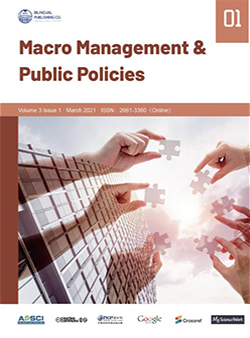-
923
-
357
-
276
-
266
-
251
A Comparative Study of Humanistic Exchange and Cooperation between China and Southeast Asian in the Perspective of "the Belt and Road" Initiative
DOI:
https://doi.org/10.30564/mmpp.v3i1.2928Abstract
In the exchanges between different countries, apart from enhancing political mutual trust and strengthening pragmatic cooperation, it is of great importance to forging humanistic exchange. With a long history of exchanges between China and all the countries in South-east Asia, the humanistic exchange between China and South-east Asia has been continuing since the founding of the People's Republic of China. After the establishment of China-ASEAN dialogue relations, the strategic position of humanistic exchange has been rapidly improved. By means of the case study of Confucius Institute, sister cities, and tourism cooperation, the author has found that humanistic exchange between China and South-east Asia has enjoyed a long history and embodied profound and extensive meaning. It is the ancient Maritime Silk Road that helped to form the exchanges between China and South-east Asia. In the meantime, it is the 21st-Century Maritime Silk Road that has deepened this friendship. The successful experience of humanistic exchange and cooperation between China and South-east Asia has not only consolidated the China-ASEAN strategic partnership but also provided a conducive reference for people-to-people ties in the implementation of the Belt and Road Initiative. In addition, it has added dynamics and confidence to the building of a community with a shared future for mankind which is propelled by China's humanistic diplomacy.
Keywords:
Relationship between China and South-east Asia; Confucius institute; Sister cities; Tourism cooperation; “the Belt and Road” Initiative; Humanistic exchangeReferences
[1] Foreign Ministry Official Website :" Joint Declaration of Leaders of the People's Republic of China and ASEAN Countries —— Strategic Partnership for Peace and Prosperity", 1 October 2003, https://www.fmprc.gov.cn/web/wjb_673085/zzjg_673183/yzs_673193/dqzz_673197/dnygjlm_673199/zywj_673211/t27721.shtml, Last visit date: June 15, 2019.
[2] Press Office of the State Council of the People's Republic of China ," China-ASEAN close human exchanges and cooperation to consolidate the foundation of bilateral friendship ", About 12 December 2011, http://www.scio.gov.cn/m/zhzc/35353/35354/Document/1508370/1508370.htm, Last visit date: June 16,2019.
[3] "China TV series into ASEAN: China-ASEAN humanistic exchange in depth ", On 24 September 2012, http://news.163.com/12/0924/17/8C6D5LRS00014JB5.html, Last visit date: June 16,2019.
[4] China News Network :" Building China-ASEAN Neighbourliness and Friendship Cultural Values Helps Regional Stability ", On 18 November 2011, http://www.chinanews.com/gj/2011/11-18/3471449.shtml, Last visit date: June 16, 2019.
[5] Chen Wanling et al. Maritime Passage —— Maritime Silk Road in the 21st Century. Chongqing: Chongqing University Press, September 2018, p.110.
[6] Confucius Institute headquarters / National Han Office: http://www.hanban.org/confuciousinstitutes/node_10961.htm, final visit date: June 14, 2019.
[7] Confucius Institute headquarters / National Han Office: http://www.hanban.org/confuciousinstitutes/node_10961.htm, final visit date: June 18,2019.
[8] He Wenzhu, The Development Model and Optimization Strategy of Confucius Institutes in Thailand, Journal of Yunnan Normal University (Teaching and Research Edition of Chinese as a Foreign Language), July 2016, p.84.
[9] Li Jing: An Analysis of the Status of the Conclusion of Friendly City Relations between China and Southeast Asian Countries. Southeast Asia Vertical and Vertical, No .4, 2017, p.43-44.
[10] Fuzhou delegation to Indonesia to promote economic and trade tourism, August 23,2014, http://news.fznews.com.cn/zhengwu/2014-8-23/2014823OJvUIxO0GF141417.shtml, final visit date: June 30,2019.
[11] He Shengda, Strategic Patterns in Southeast Asia and China-ASEAN Relations, Southeast Asia Research, No.1, 2014, pp.1-10.
[12] Zhao Jianjun. Difficulties and Countermeasures of the Friendly City Mechanism in the Construction of the Southern Silk Road Tourism Belt. Journal of Dali University, September 2018, p.118.
[13] Data source: ASEAN Secretariat: http://www.scio.gov.cn/m/zhzc/35353/35354/Docu-ment/1508370/1508370.htm0
[14] < China outbound tourism development annual report 2018> public release, June 27, 2018, http://www.scio.gov.cn/m/zhzc/35353/35354/Document/1508370/1508370.htm1. final visit date: June 30,2019.
[15] Lin Ming-tai, Lian Chenxi, Zhao Xiangxiang. A Joint Analysis of Mazu Cultural Tourism Development in Major countries along the Maritime Silk Road. Journal of Wuyi University, May 2018, p.64.
[16] Xi Jinping, Working Together to Build China-ASEAN Destiny Community —— Speech in Indonesian Parliament, People's Daily, October 4, 2013, 2nd ed.
Downloads
How to Cite
Issue
Article Type
License
Copyright © 2021 Author(s)

This is an open access article under the Creative Commons Attribution-NonCommercial 4.0 International (CC BY-NC 4.0) License.




 Zhihong Wen
Zhihong Wen

